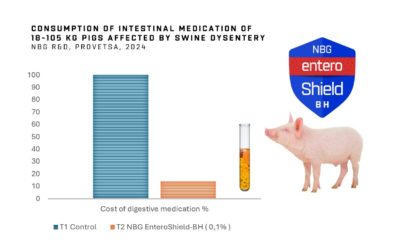Curcumin: A multifaceted product for the treatment of swine dysentery

Dear colleagues,
Curcumin, known as the main active component of turmeric, has been the subject of numerous studies due to its anti-inflammatory and antimicrobial properties. This natural compound offers hope not only for the treatment of inflammatory bowel diseases (IBD), but also as a promising alternative against antibiotic-resistant pathogens such as Brachyspira hyodysenteriae.
Curcumin against Brachyspira hyodysenteriae
B. hyodysenteriae is a bacterium that causes porcine hemorrhagic dysentery, a disease that significantly affects the swine industry. Antibiotic resistance has prompted the search for alternative treatments, and curcumin is emerging as a viable option. Its mechanisms of action include inhibiting biofilm formation and disrupting the bacterial cell membrane, which can lead to destabilization and death of the bacteria.
Anti-inflammatory Effects on the Colon
In addition to its antimicrobial activity, curcumin is highly effective in reducing colon inflammation. This is of particular interest for the treatment of IBD, where curcumin has been shown to reduce the incidence of diarrhea and preserve colon health. It works by inhibiting inflammatory markers such as NF-kB, which helps repair damaged tissue and maintain the integrity of the gastrointestinal mucosa.
Considerations and Future Perspectives
Although the results are promising, it is crucial to consider the bioavailability of curcumin and the possibility of encapsulating and emulsifying it to enhance its effect. At NBG, we have designed NBG EnteroShield-BH, an enteroprotector with a boosted and protected curcumin core, which, together with the other active ingredients, reduces the incidence of swine dysentery in animals, as can be seen in the attached graph.
For more information, you can contact us through the following link:
Conclusion
Curcumin stands out as a multifaceted compound with significant potential in the field of swine health. Its ability to act against resistant pathogens and its anti-inflammatory effect in the colon make it a promising candidate for future therapeutic applications. However, further research is required to maximize its therapeutic potential, such as with encapsulation technologies.

